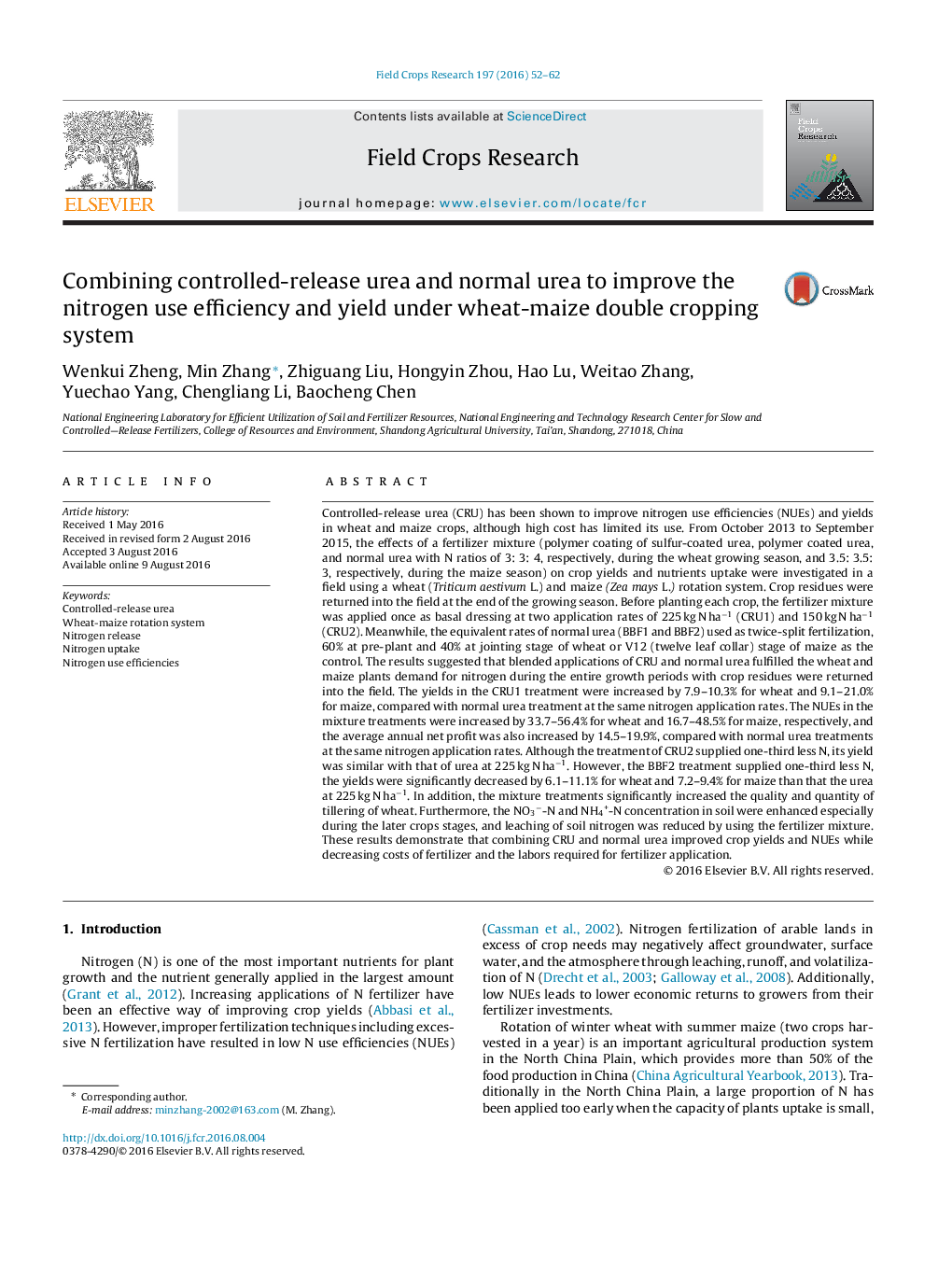| Article ID | Journal | Published Year | Pages | File Type |
|---|---|---|---|---|
| 6374364 | Field Crops Research | 2016 | 11 Pages |
â¢Fertilizer mixture of controlled-release urea (CRU) and normal urea increased crop yield, NUE, and net farm profit, compared with normal urea.â¢Release rates of CRU in water and soil were investigated.â¢Releases rates of N from fertilizer mixture corresponded well to the N requirements of wheat and maize plants.â¢Fertilizer mixture reduced the leaching of inorganic nitrogen from the crop root zones, compared with normal urea.
Controlled-release urea (CRU) has been shown to improve nitrogen use efficiencies (NUEs) and yields in wheat and maize crops, although high cost has limited its use. From October 2013 to September 2015, the effects of a fertilizer mixture (polymer coating of sulfur-coated urea, polymer coated urea, and normal urea with N ratios of 3: 3: 4, respectively, during the wheat growing season, and 3.5: 3.5: 3, respectively, during the maize season) on crop yields and nutrients uptake were investigated in a field using a wheat (Triticum aestivum L.) and maize (Zea mays L.) rotation system. Crop residues were returned into the field at the end of the growing season. Before planting each crop, the fertilizer mixture was applied once as basal dressing at two application rates of 225 kg N haâ1 (CRU1) and 150 kg N haâ1 (CRU2). Meanwhile, the equivalent rates of normal urea (BBF1 and BBF2) used as twice-split fertilization, 60% at pre-plant and 40% at jointing stage of wheat or V12 (twelve leaf collar) stage of maize as the control. The results suggested that blended applications of CRU and normal urea fulfilled the wheat and maize plants demand for nitrogen during the entire growth periods with crop residues were returned into the field. The yields in the CRU1 treatment were increased by 7.9-10.3% for wheat and 9.1-21.0% for maize, compared with normal urea treatment at the same nitrogen application rates. The NUEs in the mixture treatments were increased by 33.7-56.4% for wheat and 16.7-48.5% for maize, respectively, and the average annual net profit was also increased by 14.5-19.9%, compared with normal urea treatments at the same nitrogen application rates. Although the treatment of CRU2 supplied one-third less N, its yield was similar with that of urea at 225 kg N haâ1. However, the BBF2 treatment supplied one-third less N, the yields were significantly decreased by 6.1-11.1% for wheat and 7.2-9.4% for maize than that the urea at 225 kg N haâ1. In addition, the mixture treatments significantly increased the quality and quantity of tillering of wheat. Furthermore, the NO3â-N and NH4+-N concentration in soil were enhanced especially during the later crops stages, and leaching of soil nitrogen was reduced by using the fertilizer mixture. These results demonstrate that combining CRU and normal urea improved crop yields and NUEs while decreasing costs of fertilizer and the labors required for fertilizer application.
